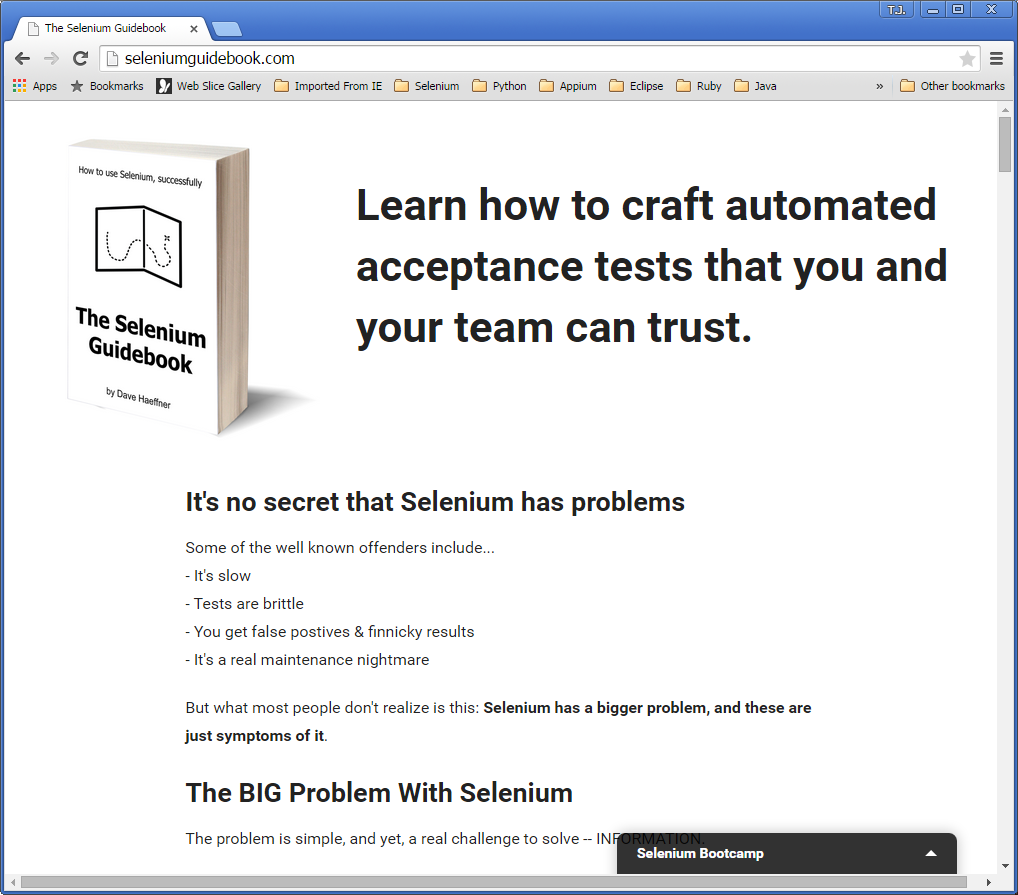Download The Selenium Guidebook By Dave Haeffner Pdf
Selenium is a free and open-source browser automation library used. For more information on the Selenium Java bindings, check. BY DAVE HAEFFNER. Anyone else but you instrumental mp3 download. You need to download the appropriate Microsoft WebDriver server for. That's perfect for writing automated tests against), and author of The Selenium Guidebook.
2 free download and enjoy the sky combat.Installation instructions:Tom Clancy’s H.A.W.X 2 PC Game Cracked by TiNYiSO Free Download Parts Link 6.18 GB. Right click on the 1st part and click on “Extract here”. Get the Tom Clancys H.A.W.X. Download all parts from download links given below. 
Block or report user Contact Support about this user’s behavior.
Learn more about reporting abuse
Report abuse View GitHub Profile
View asdf.spec.js| // Generated by Selenium IDE |
| constassert=require('assert') |
| constgeckodriver=require('geckodriver') |
| const{ Builder, By, Key, until }=require('selenium-webdriver') |
| const{ ConsoleLogHandler, Target, Eyes, Configuration, VisualGridRunner, BrowserType, DeviceName, ScreenOrientation }=require('@applitools/eyes-selenium') |
| describe('asdf',function(){ |
| letdriver |
| letvars |
| leteyes |
View building-ie-driver-3.x.md
View ie.enableFullPageScreenshot.js| const{ Builder }=require('selenium-webdriver') |
| constfs=require('fs') |
| constpath=require('path') |
| asyncfunctionrun(){ |
| constdriver=awaitnewBuilder() |
| .withCapabilities({ |
| 'se:ieOptions': { |
| 'ie.enableFullPageScreenshot': false |
| } |
View Class1.cs| usingNUnit.Framework; |
| usingOpenQA.Selenium; |
| usingOpenQA.Selenium.Firefox; |
| namespacesandbox |
| { |
| [TestFixture] |
| classClass1 |
| { |
| IWebDriverDriver; |
View top-hat-promo-links.md
View bio.md
View gist:aa03a05e89abd44fad73096478160b66
View se-copyright| // Licensed to the Software Freedom Conservancy (SFC) under one |
| // or more contributor license agreements. See the NOTICE file |
| // distributed with this work for additional information |
| // regarding copyright ownership. The SFC licenses this file |
| // to you under the Apache License, Version 2.0 (the |
| // 'License'); you may not use this file except in compliance |
| // with the License. You may obtain a copy of the License at |
| // |
| // http://www.apache.org/licenses/LICENSE-2.0 |
| // |
View .vimrc| ' be iMproved, required |
| setnocompatible |
| ' Set utf8 as standard encoding and en_US as the standard language |
| setencoding=utf8 |
| ' set leader key |
| let mapleader =',' |
| ' customize characters |
View overloaded-explicit-wait.java| // in Base Page Object |
| publicBoolean isDisplayed(By locator) { |
| try { |
| return find(locator).isDisplayed(); |
| } catch (org.openqa.selenium.NoSuchElementException exception) { |
| returnfalse; |
| } |
| } |
| publicBoolean isDisplayed(By locator, Integer timeout) { |
So you've written your fair share of Selenium tests. Perhaps you've dabbled with Page Objects, Wait Strategies (ala Implicit and/or Explicit Waits), and you feel confident about your locators. Your test code might be in pretty good shape - able to work reliably as time marches on and the application under test continues to evolve and your testing needs continue grow with it. But how do you know? It's not like there is a quantitative way to measure this. Or is there?Join Dave Haeffner as he steps through the core tenets of good test and page object design, locators, and a repeatable and quantitative approach for assessing your test code. When you're done, you'll be able to see how your tests and page objects stack up, and what changes are needed to help them stand the test of time.

